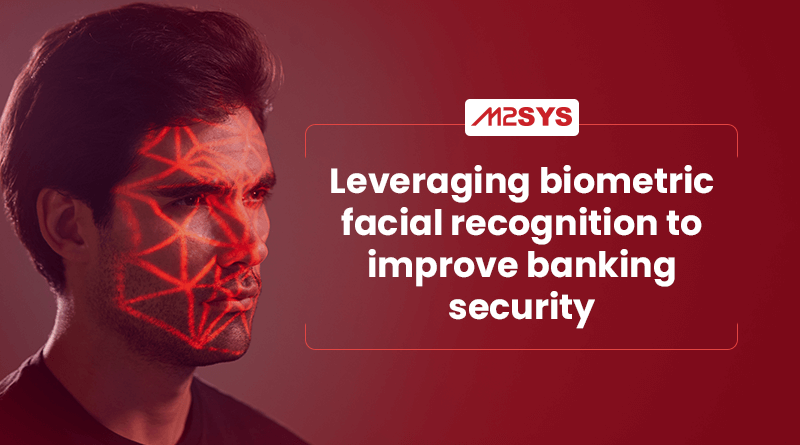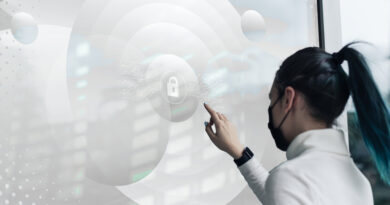Leveraging biometric facial recognition to improve banking security
Javelin Strategy & Research estimates that between 2015 and 2016, there was a 16% increase in the number of identity fraud cases.
Preventing fraudsters is still a challenge for the financial sector. Even with the widespread use of EMV cards and strict password creation guidelines, fraudsters continue to prey on banking users, which is costly for banks. Last year, fraud cost U.S. financial institutions alone $16 billion.
The problem stretches beyond North America. According to ACI Worldwide, card fraud affected 56% of Mexicans and 49% of Brazilians last year.
What is the solution? Top financial organizations are beginning to explore alternatives to traditional authentication techniques like passwords and PINs. Many believe that biometric technologies, such as facial recognition software, are the solution for improving banking security.
The Issue With Passwords
A big problem with using passwords is that they are based on what people know. Hackers can get this information in many different ways.
Also, the more tricky they become, the easier it is to forget them. If a bank customer forgets his password, he might get an email with a temporary code to reset it. The problem is that someone could use a man-in-the-middle attack to steal that email and use the code for themselves.
Even security questions are not always reliable. A cybercriminal could look through a customer’s social media page to gather important information. In order to alter a customer’s password, a hacker may need to answer questions like “Where were you born?” or “What was your first pet’s name?”
Social engineering is another prominent hacking technique. Symantec identified fraudsters trying to dupe Gmail users into providing verification codes by sending messages that appear to be from Google.
In short, passwords alone won’t be effective at stopping fraudsters. So, what makes facial recognition different from other technologies?
Using facial recognition to prevent fraud
On a mobile device, facial recognition software authenticates users based on who they are rather than what they know. With the device itself as the first authentication factor and a live facial image as the second, facial recognition on mobile devices gives a second factor of authentication. Fraudsters have more hurdles while using multi-factor authentication.
Despite being one of the most effective biometric technologies, face recognition does carry a higher threat of impersonation due to the higher availability of a victim’s facial pictures. A hacker can attempt to employ a “spoof,” or image of the person they are impersonating. Due to this, it’s important to use tools for spoof detection that analyze the “liveness” of the facial image. This applies to various biometric modalities, including fingerprints, and is frequently referred to as “liveness detection.”
Let’s explore some more uses for biometrics in the fight against fraud. One example is the ability of facial recognition to stop hackers from creating fake accounts. Consider a scenario where a fraudster enters a bank and requests to open a credit line using a fake driver’s license that contains the true details of a customer. The teller asks them to pose for a picture in front of the camera as part of the onboarding process, which is used to compare with the known customer’s biometric record and identify a mismatch. As a result, the teller alerts management to the problem so that it can be looked deeper into the issue.
Accounts on a computer can also be accessed using facial biometrics. Webcams, for example, are commonly included with computers. A banking customer can utilize their facial biometrics as an additional security measure every time they connect into their online accounts and request transactions.
According to SkyQuest Technology Consulting, the market for fingerprint sensors is predicted to grow from its estimated value of USD 3.27 billion in 2021 to USD 6.45 billion by 2028, at a CAGR of 10.2% over the forecast period (2022-2028). Therefore, a bank has the option to require both facial recognition and fingerprint images for customer authentication.
Getting Facial Recognition Technology
Software development kits are provided by biometrics providers to banks with the ability to create their own apps (SDKs). They enable businesses to design biometric solutions that fit their own business operations.
Financial institutions can incorporate face recognition technology into their operations in a cost-effective way with biometrics-as-a-service (BaaS). Banks are now able to add biometric capabilities without spending money on a customized solution thanks to BaaS. Instead of paying a one-time license price, financial institutions pay monthly subscription fees to use the technology.
Although there will always be fraudsters, biometrics have shown that they can significantly restrict their efforts.
Conclusion
M2SYS is the best vendor of identity management software for businesses and governments. We provide a wide range of products that can be personalized to meet the requirements of any government agency or business. You are only one click away from reality if you’re looking for a biometric facial recognition solution. Contact us right now!











